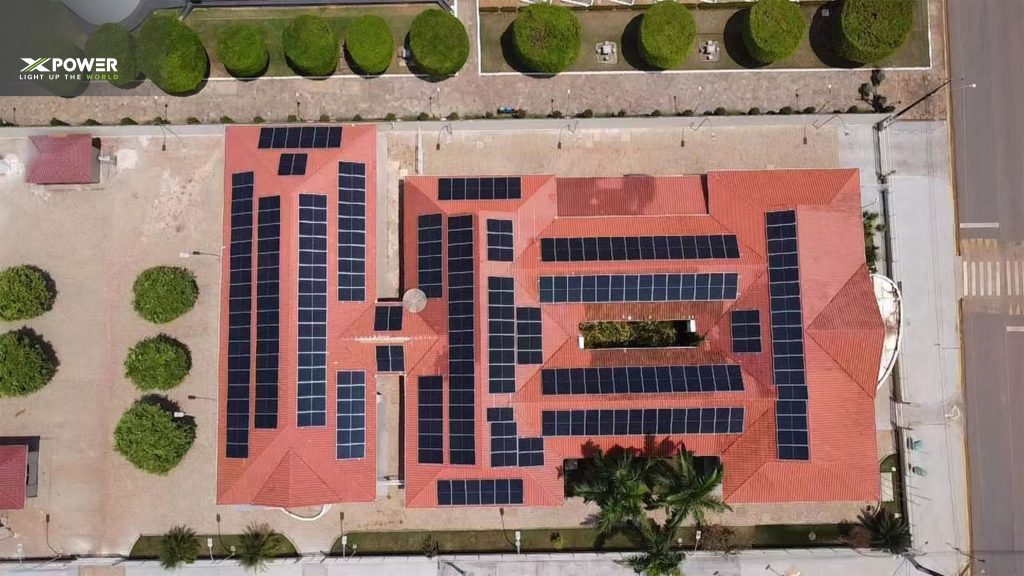Paneles solares HJT versus paneles de silicio monocristalino tradicionales: costos de fabricación
Fecha de lanzamiento: 2024-04-16
En el dinámico panorama de la energía solar, la búsqueda de tecnologías fotovoltaicas más eficientes y rentables ha llevado al surgimiento de tipos innovadores de paneles solares. Una de estas tecnologías, la tecnología de heterojunción (HJT), ha llamado la atención por su potencial para ofrecer una mayor eficiencia y rendimiento en comparación con los paneles de silicio monocristalino tradicionales. Un factor crítico a la hora de evaluar la viabilidad y la adopción de los paneles solares HJT son sus costos de fabricación. En este artículo, analizamos en profundidad los costos de fabricación de los paneles solares HJT frente a los paneles de silicio monocristalino tradicionales.

Paneles tradicionales de silicio monocristalino
Paneles de silicio monocristalino Los paneles de silicio monocristalino han sido la piedra angular de la industria solar durante décadas, apreciados por su confiabilidad y rendimiento comprobado. El proceso de fabricación de paneles de silicio monocristalino implica el crecimiento de una estructura monocristalina a partir de una masa fundida de silicio, lo que da como resultado células solares de alta calidad. Si bien estos paneles ofrecen eficiencia y durabilidad comprobadas, los avances en la tecnología han impulsado el desarrollo de alternativas que prometen mayor eficiencia y costos de fabricación potencialmente más bajos.
Paneles solares HJT: eficiencia e innovación
Los paneles solares HJT representan una fusión de la tecnología de silicio cristalino con la tecnología de película fina, con el objetivo de lograr niveles superiores de eficiencia. El proceso de fabricación de los paneles HJT implica depositar capas finas de silicio amorfo en ambos lados de una oblea de silicio cristalino, creando una heterojunción. Este enfoque innovador reduce la cantidad de material de silicio necesario al tiempo que mejora la absorción de la luz y el transporte de electrones, lo que potencialmente conduce a una mayor eficiencia y ahorro de costos.

Factores clave que afectan los costos de fabricación de los paneles HJT:
1. Eficiencia del material:La tecnología HJT utiliza técnicas de deposición de película fina, lo que permite utilizar menos material de silicio en comparación con los paneles de silicio monocristalino tradicionales. Esta reducción en el uso de material puede generar importantes ahorros de costos durante la fabricación.
2. Eficiencia de producción:Los procesos de fabricación eficientes, la automatización y las economías de escala desempeñan un papel crucial en la reducción de los costos laborales y el aumento de la producción, lo que repercute en los costos generales de fabricación de los paneles HJT.
3. Equipos y tecnología:Las inversiones en equipos y tecnología avanzados para la deposición de películas delgadas y el procesamiento de celdas son esenciales para lograr paneles HJT de alta calidad. Si bien las inversiones iniciales pueden ser mayores, los avances en las técnicas de fabricación pueden generar reducciones de costos con el tiempo.
Análisis comparativo
Al comparar los costos de fabricación de los paneles solares HJT con los de los paneles de silicio monocristalino tradicionales, entran en juego varios factores. Si bien la tecnología HJT puede implicar costos iniciales de instalación más elevados debido a la necesidad de equipos y procesos especializados, el potencial de ahorro de costos mediante la eficiencia de los materiales y una mayor eficiencia de producción de energía puede hacerla competitiva a largo plazo.
Eficiencia de costos:El uso de tecnología de película delgada en paneles HJT permite optimizar el uso del material, lo que potencialmente resulta en menores costos de fabricación por unidad de potencia de salida en comparación con los paneles de silicio monocristalino tradicionales.
Ganancias de eficiencia:La tecnología HJT ofrece la promesa de mayores niveles de eficiencia, lo que puede traducirse en una mayor producción de energía y retornos financieros durante la vida útil de los paneles, compensando los costos de fabricación iniciales.
Innovación e investigación:La investigación y el desarrollo continuos en la tecnología HJT son cruciales para impulsar más reducciones de costos y mejoras de rendimiento, garantizando su competitividad en el mercado de la energía solar.
En conclusión, los costos de fabricación de paneles solares hjt En comparación con los paneles de silicio monocristalino tradicionales, los costos de los paneles HJT se ven influenciados por diversos factores, como la eficiencia del material, los procesos de producción y los avances tecnológicos. Si bien los costos iniciales pueden variar, el potencial de mayor eficiencia y ahorro de costos a largo plazo posiciona a la tecnología HJT como un competidor prometedor en el panorama de la energía solar.
Adoptar la innovación e invertir en tecnologías avanzadas de paneles solares como HJT es esencial para impulsar la transición hacia un futuro de energía renovable y sostenible. Al comprender los matices de los costos de fabricación y las ganancias de eficiencia asociadas con las diferentes tecnologías de paneles solares, las partes interesadas en la industria de la energía solar pueden tomar decisiones informadas para acelerar la adopción de soluciones de energía limpia en todo el mundo.





